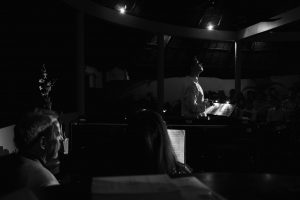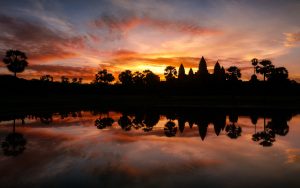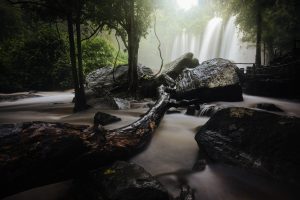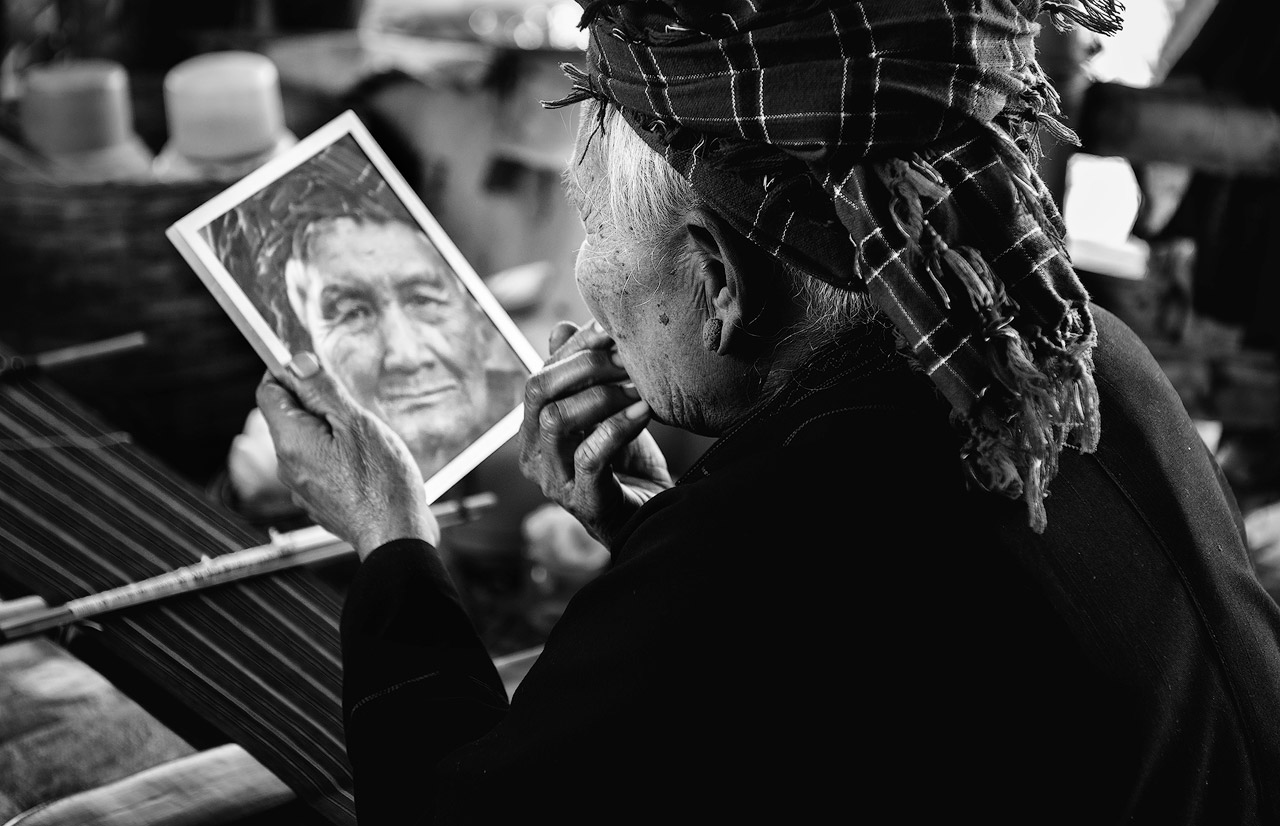
With each bump the ill-fitting, half-face motorcycle helmet twists a little more. So, too, does my own face, the pain in my abdomen making the race through the winding mountain passes of the Shan, Burma’s easternmost province, even more uncomfortable. I wince as we strike each great channel gouged from the now-dusty tracks by the rushing torrents that sweep down these hills in the tropical downpours of summer. Thirty minutes earlier, my quintessential Asian-travel experience had begun: After a day’s trek to a remote Danu village some 1200m above sea, I found myself on my back, writhing in pain.“God! His appendix,” exclaimed one trekker, the right side of my distended abdomen bulging as she leaened over me. “He needs a hospital.”
My guts had been knotted since Mandalay; I’d spent the latter part of Christmas Day in the foetal position, my girlfriend fulfilling our family Skype commitments in my absence as I lay in bed. Three days passed yet the discomfort remained. I’d masked the pain as we hiked all day today, but an hour ago I’d become desperate and accepted a handful of capsules at our bamboo berth in the village. “For cramps and diarrhoea,” explained Henry, a Vietnamese trekker with whom we’d spent the afternoon. It didn’t take long for his pills to work their magic, with those exact symptoms causing all manner of ghastly noises from the wooden squat outhouse to the rear of the residence. I emerged some twenty minutes later, depleted of all energy and dignity, the local villagers conceding that medical attention was my only option. After bundling me onto the back of a Thai-made Honda, its feeble 100cc engine squealed as it tore out of the village and into the bitter, starry night. “Hold on! Kalaw is just one hour from here.”
I awake the next morning in the Golden Lily Guesthouse, the only available room in town amid the height of trekking season and not without good reason. A freezing cold shower does little to lift my spirits, nor does the lungful of dust I cough up from my moto-evacuation. I swallow the cocktail of pills prescribed by last night’s ill-tempered, portly Burman woman, opening her ramshackle clinic especially for me. “Complete full course,” she’d barked, rolling her eyes, perhaps not without fair cause given last night’s foolish self-diagnosis. My girlfriend steps into the room. “They need us at the office,” she says. “To collect our bags.” The trekking company had originally offered baggage delivery to Inle, the trek’s endpoint, but had decided I wasn’t capable of completing the hike, telling me in no uncertain terms as we reach the “office,” little more than a roadside stand stacked head-high with backpacks. A job to do, I begin pleading with them to allow us to rejoin our group.
Just one month earlier I’d told a friend, Simon, I would be travelling to Burma. “I wonder if you might do me a favour,” he enquired. A photo landed in my Dropbox account: an elderly Asian woman in a red headdress with a deep bruise above her eye stared back at me. “I took this on a trek,” he explained. “From Kalaw to Inle.” “Do you think you could print it off and give it to her? Oh, and pick me up some cigars.” Over the following days, he tracked down the contact details of the trekking guide he’d used, with whom I began to exchange emails. “Surely a wild goose chase,” I thought. I printed the photograph nonetheless, slotting it between my Macbook’s screen and keyboard for safe passage.
“You must know… If you are sick again, we can not bring you back. We can not get you to hospital. No cars can go to these villages. Do you understand?” I consider acquiescing, but as I’m sure my girlfriend will attest, I’m nothing if not stubborn. I determine to complete the trek on my own terms. Finally agreeing, our new guide, a darker-skinned Burman with a goatee and beanie hat, thrusts three large red bananas into my hand to ease my cramps. I chuckle, recalling a Mitch Hedberg quip. He doesn’t find it funny. “You trek together,” he barks, gesturing toward Andreas and Carla, a travelling couple from Denmark, dressed in jeans and sneakers I can’t help but notice. “You are the one who was sick?” they ask, no doubt harbouring reservations of their own.
An hour later, our minibus delivers us to a parched, desolate land a far cry from the lush mountain forests and tea plantations of the day before. My calves burn as we begin to trek, and my throat runs dry, the rehydration sachets I’d guzzled down earlier having little effect. I question my judgement to carry on as the Danes, despite not looking the part, move a shade faster than our group had yesterday. Just what I need. We’re given breaks just regularly enough that I don’t give the game away, that there’s nothing more I’d like than to find a nice corner in which to curl up and die, driven only by a promise to a friend. With that in mind, I show the image to our guide. He doesn’t know the woman personally, but her style of dress offers clues as to where we might find her, the black garments and bright headdresses of the Pa’O ethnic group, or Black Karens, being distinct among the hill-tribes of the Shan. “Maybe next village,” he muses.
We skirt fields of crops slain by the winter sun. “No rain ’til April,” explains our guide. “Winter is only good for the water buffalo,” he offers, pointing out a gentle giant chewing cud at the trail’s edge. “Also good for peppers. But all gone now; only white pepper left,” he explains, looking to the dried remnants among the undergrowth “Even one bite is too much” he says. Carefully timing a glance towards me, he finishes, “Not good for stomach.” Nor were the bananas; my cramps worsen.
I people-watch to divert my mind from my midsection…
A parade of women pass by, their faces thick with thanaka. They carry woven bamboo baskets on their backs, supported not with shoulder straps as one would find on an ordinary backpack, but with a lashing of rope around their foreheads. Men in straw hats idle in the shade of sacred Bodhi trees, seeking solace from the cruelty of the faultless sky. Young children laugh and play with the spoils of their curiosity; an earlier trekker has handed out gifts of balloons. “Enjoying Christmas holidays,” says our guide.
Older children herd bulls to graze in the parched fields, impatiently tugging at a series of ropes around the animals’ necks to hurry them along. “No school, also?” enquires Carla. “Children can only go to primary school,” explains the guide. Whilst children are entitled to a free middle school education in Myanmar, “There is nowhere to go.” Despite the regime selling of the Shan’s wealth of natural resources to China, it would seem there is no money for the building of schools. Children who don’t enter the monasteries in pursuit of learning lend their hands to work all too quickly, as early as age 8 or 9.
We arrive at Pinnwe Village and are huddled into a bamboo hut, seated around an elderly lady at her wooden weaving apparatus. She pours us tea without rising from the machine, and is quickly back to adding the finishing touches to one of the cotton bags ubiquitous among the mountain tribes-people. There’s an air of familiarity to her kind eyes, and so we consult the photograph in my backpack. It’s her. We ask the guide to translate, not knowing that the Pa’O are a Christian people with their own language very unlike Burmese. He does his best with what few words he knows as we push the paper image into her callused hands. Not knowing what to do with the photograph, she gives it the most cursory of glances before beginning to fold the paper up to drop in her pocket. Something has been lost in translation, surely? The rest of the villagers, now crowded into the same small hut, urge her to look again. She startles everyone with a rambunctious cackle, then turns her head and smiles at me, bowing her head lightly. Countless tourists have passed through here and captured her image, yet this is first photograph she has ever received.
We learn her name is Ma Paut, and she is surprisingly spritely for her 85-years. Burma has experienced great change over her lifetime: the fall of the British Empire; a faint glimmer of hope in Burmese independence; the military coup d’etat and resultant atrocities; Aung San Su Kyi’s many periods of house arrest; and the tatmadaw’s change into plain clothes in 2012. Despite Burma’s eternal, ongoing transformation, little has changed for Ma Paut save the wrinkles on her face. She runs her fingers along them now, staring into the photograph, examining the marks of time. She soon turns her hands back to the more familiar task of working cotton, a task that has occupied those for the last seven decades.
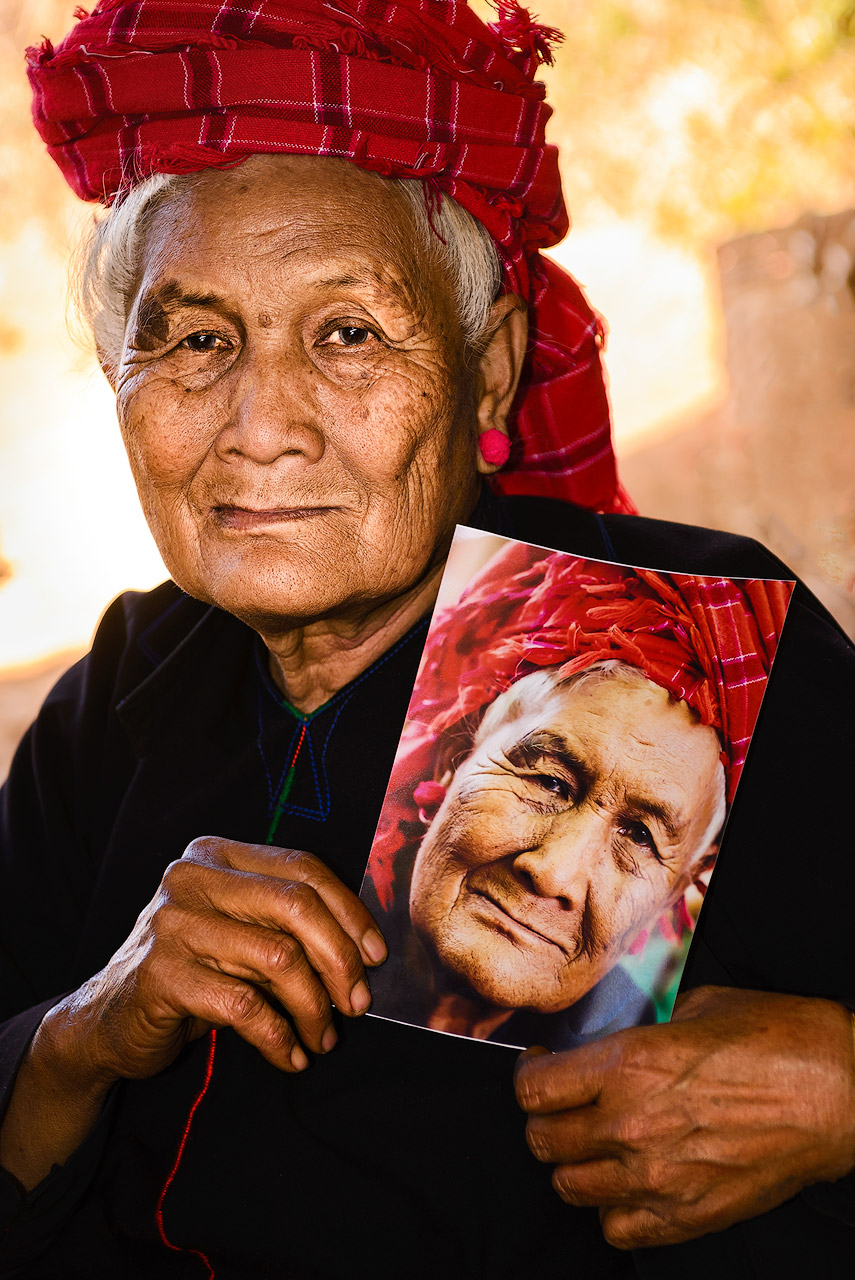
85-year-old Ma Paut poses with Simon’s print.

The remote, mountainous route to Kalaw. Imagine my delight in traversing these winding trails at speed in total darkness.
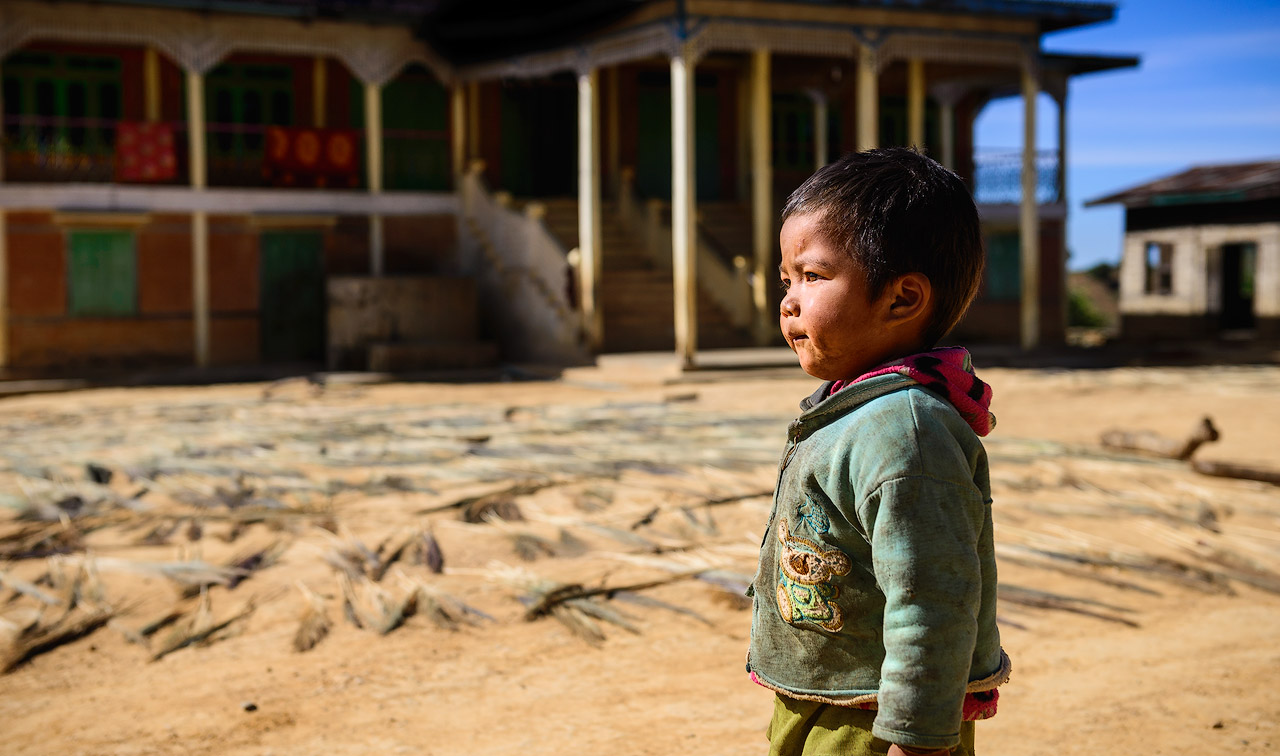
A young girl stands out front of a monastery just outside of Kalaw, Shan State.
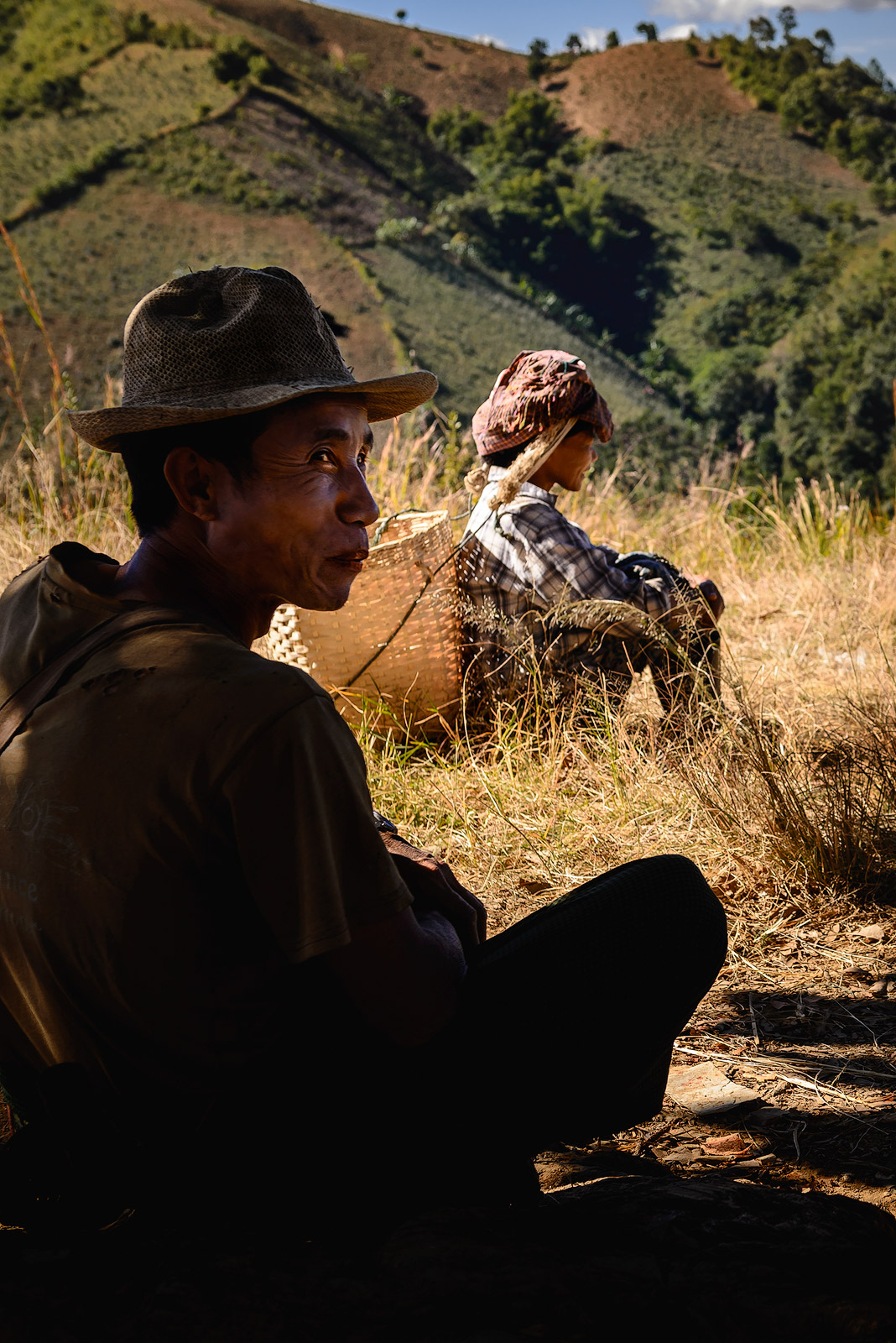
A male villager shelters from the cruel heat of midday. A woman, seen in the background, supports a bamboo basked with a headstrap.
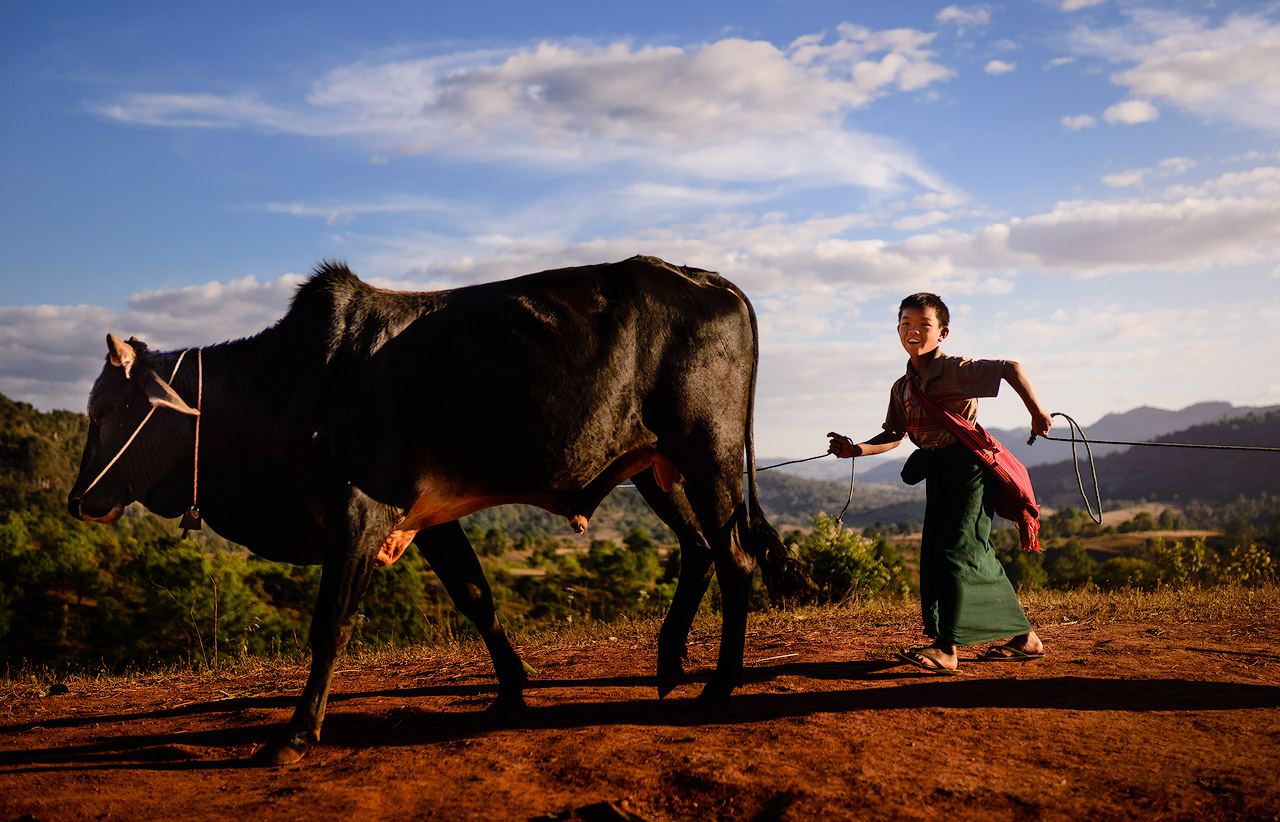
A young boy herds cows with a series of ropes as he treks back to his remote mountain village.

Ma Paut stares into the photograph, tracing the wrinkles on her face before turning her hands back to her weaving.
What Next?
If you’ve enjoyed this photo essay or my travel photography, I’d love for you to join me on my photographic journey. There are a few ways you can connect with me. The easiest is to Follow Me on Facebook. I’d really appreciate it if you shared my profile with friends and family to help me reach new audiences. You’ll also find a selection of my work on 500px and Instagram.
Also, be sure to check out Simon’s blog, The Secret Map by Simon Slater. Perhaps you can email him a photo and send him an adventure of his own. Simon was also featured in my article, “The Fantastic Five,” which you can read here.

